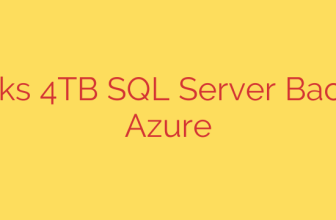
The exponential growth of digital infrastructure has placed data centers squarely at the forefront of global energy discussions. These facilities, the engines of the digital age, demand immense amounts of electricity, posing significant challenges and opportunities for grid stability. Understanding this dynamic relationship is crucial as the world moves towards more sustainable energy sources and increased electrification.
Historically, data centers were primarily viewed as large, constant consumers of power, adding substantial base load to the grid. Their continuous operation requires a reliable and consistent power supply, making any grid fluctuations a potential risk to their critical functions. This high demand necessitates robust grid infrastructure and often relies on traditional, less flexible energy sources.
However, the role of data centers is rapidly evolving from passive consumers to potential active participants in grid management. As these facilities become more sophisticated and integrate advanced technologies, they can play a part in enhancing grid resilience and stability. One key area is their increasing adoption of renewable energy sources, such as solar and wind power. By directly sourcing renewables or purchasing clean energy certificates, data centers contribute to the decarbonization of the power sector.
Furthermore, the integration of on-site energy storage systems, such as large-scale battery installations, is transforming the interaction between data centers and the grid. These storage solutions provide backup power, reducing reliance on the grid during peak demand or outages, and can also potentially participate in grid services. They can store excess renewable energy when available and discharge it when needed, helping to balance supply and demand.
Another critical aspect is demand response. Data centers have significant, albeit often critical, electrical loads. By optimizing their operations, shifting non-essential tasks, or utilizing stored energy during periods of high grid stress or peak pricing, data centers can reduce their demand, providing valuable flexibility to grid operators. This dynamic load management helps prevent brownouts and blackouts, contributing directly to grid reliability.
The future sees data centers becoming even more intertwined with the smart grid. Through advanced control systems and AI-driven load balancing, they can potentially offer ancillary services to the grid, such as frequency regulation or voltage support. This transition from being merely large consumers to becoming flexible, intelligent loads and even distributed energy resources marks a significant shift.
In conclusion, while the substantial power requirements of data centers present challenges for grid stability, their potential for integrating renewables, deploying energy storage, and implementing demand response strategies positions them as vital partners in building a more resilient, sustainable, and stable energy future. Their evolution is key to managing the increasing demands of the digital world while supporting the transition to a cleaner power grid.
Source: https://www.datacenterdynamics.com/en/opinions/the-role-of-data-centers-in-the-stability-of-the-grid/








